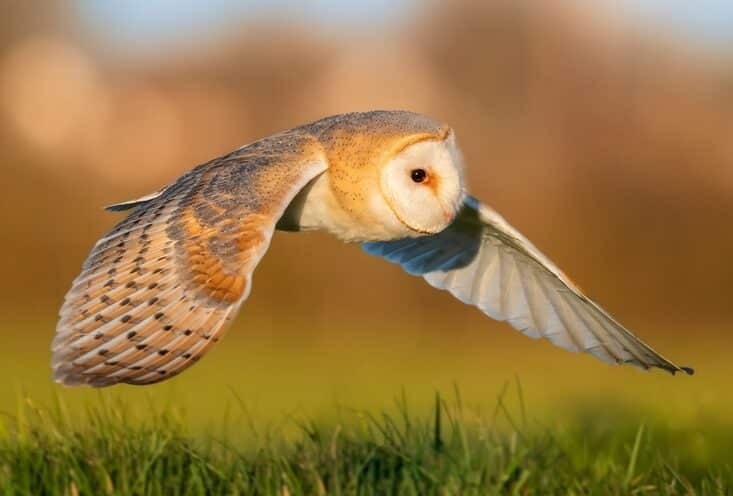


This question is common, both for birders and non-birders alike. Raptors are popular animals that tend to catch people’s interest more than most other species. While there are not many birds of prey in Hawaii, the ones that do live here are fascinating.
There is even one species that ONLY lives on the Hawaiian Islands. 🙂
The ability of Short-eared owls to travel long distances means that they have found their way to many remote locations. In the Hawaiian archipelago, Short-eared Owls can be spotted on all the larger islands. There, they live in forest and grassland habitats.
The debate continues on whether these birds of prey should be considered native to Hawaii. Their introduction to the islands was influenced by prehistoric humans, and this occurred fairly recently in evolutionary terms.
When Polynesian settlers arrived on the islands, they brought the Polynesian rat with them. This new food source may have led to the settling of Short-eared owls in the archipelago shortly after.
The Short-eared owl is now an integral part of Hawaiian fauna and culture. The local population evolved into an endemic subspecies known as the Hawaiian Short-eared owl or the Pueo (Asio flammeus sandwichensis).
Sadly, the number of these raptors is now declining in Hawaii. The causes include disease, vehicle collision, habitat loss, and predation of their ground-nesting hatchlings by invasive species.
Barn owls are the most widespread species of any land bird in the world! In some temperate regions, Barn owls can occasionally be spotted hunting in the daytime. This adaptive behavior may help them overcome food scarcity. In tropical areas, like Hawaii, where food is always plentiful, Barn owls are nocturnal.
Barn owls were intentionally introduced to Hawaii by the Board of Agriculture in the hope of controlling the rat population. In the late fifties, they released 86 barn owls on Hawaii Island, Oahu, Molokai, and Kauai. Nowadays, these birds of prey can be spotted on most islands in the Hawaiian archipelago.
Unfortunately, introducing these birds of prey did not achieve the desired impact across Hawaii. Furthermore, Barn owls have negatively impacted native species.
This is probably because, in Hawaii, Barn owls are nocturnal hunters. Conversely, the endemic Short-eared owl and other raptors hunt in the daytime. Native fauna has not adapted to the presence of night-time aerial predators and is easily preyed upon.
One example is the Hawaiian petrel, a native Hawaiian seabird that nests on the ground. Conservation workers have reported finding petrels killed by raptors during the night. Barn owls are the primary suspects. Numerous other native birds, including Hawaiian ducks and stilts, are known to have fallen prey to Barn owls (Strohecker, 2014).


Hawaiian hawks are fairly large birds of prey, up to 18 in (45cm) long. Their ability to soar higher than any other Hawaiian bird led them to be historically associated with royalty. They have a loud, screeching call that is said to sound similar to their Hawaiian name (‘Io).


Before the introduction of invasive mammal species to the ecosystem, the Hawaiian hawk most likely fed on small birds. In modern times, the hawk also preys upon rats, mice, and game bird species.
Historically, Hawaiian hawks could be seen on many islands in the Hawaiian archipelago. Nowadays, they only breed on the Big Island.
These birds of prey are primarily threatened by habitat loss due to deforestation in Hawaii. Trees are cut down to make timber or to clear space for agriculture or urban expansion. Invasive species, notably plants and deer, also cause severe damage to the forest habitat.
Furthermore, Hawaiian hawks show a strong preference for nesting in the native Ohia tree. Sadly, a fungus (Ceratocystis fimbriate) is killing Ohia trees across the Island. This destruction directly affects habitat availability for the Hawaiian hawk.
Historically, Hawaiian hawks were revered in Hawaiian culture. Therefore, killing or harming the hawks was forbidden.
Unfortunately, in modern times, Hawaiian hawks face direct threats from humans, such as shooting and poisoning. Accidental traffic collisions are also a significant cause of mortality for hawk species, and the Hawaiian hawk is no exception.
Check out these ID Guides. Each one is specific to birds found here!
Leave a comment below!